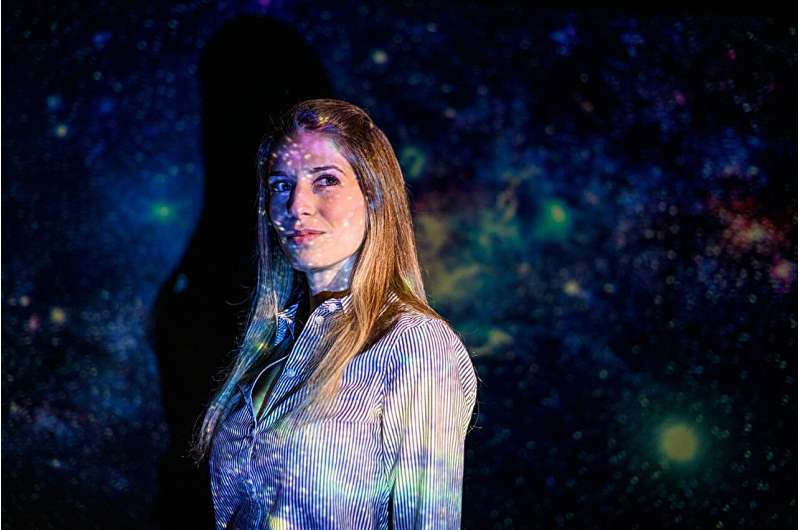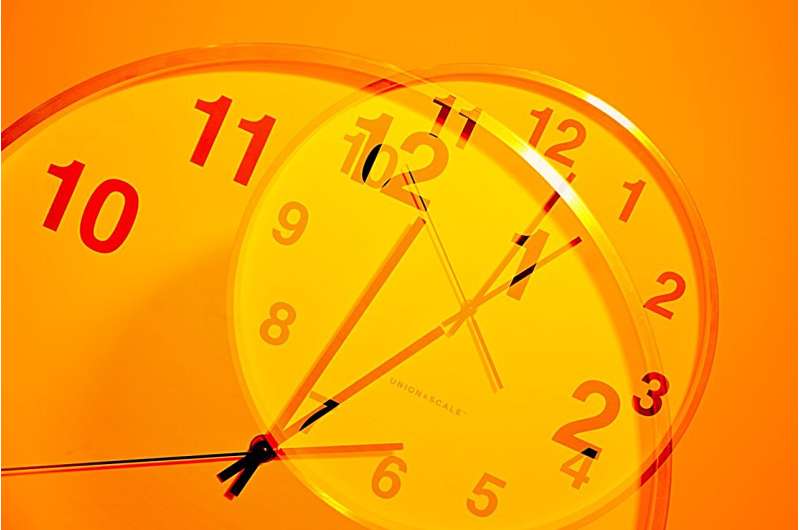This article has been reviewed according to Science X's editorial process and policies. Editors have highlighted the following attributes while ensuring the content's credibility:
fact-checked
trusted source
proofread
Why do we need a leap second? A physicist explains what is messing with the Earth's rotation

Meltwater from the polar ice caps, combined with the shifting spin of Earth's core, is messing with the Earth's rotation to the point that we might need to adjust for a "negative leap second."
The effects of climate change can be seen everywhere, in the global refugee crisis, an even worse allergy season and, now, even in the very concept of time.
Scientists have recently pinpointed how meltwater from the polar ice caps is throwing off Earth's rotation to the point that those who really care about precision timekeeping might have to implement a "negative leap second."
Does that mean our days will suddenly be 25 hours long? No, but even a change of one second is significant in a world that is built on digital systems, like GPS, that rely on precise timekeeping to operate correctly.
"For almost as long as there's been organized society, we've been trying to keep track of time, or at least days or seasons," says Jacqueline McCleary, assistant professor of physics at Northeastern University. "The core, the crust, oceans, climate change, glacial isostatic adjustment –– all of these factors [are] contributing to a change in the Earth's rate of rotation at a measurable pace, something that would accumulate a second per year or something like that."
There are two primary methods of timekeeping. Universal Coordinated Time (UTC), also known as astronomical time because it's based on Earth's rotation and position among the stars, has long been used as the global standard for clocks and timekeeping. It's what time zones are based on and what most people think of as "time."
However, Earth's rotation is not exactly a steady drumbeat, says McCleary. It's actually always changing as the sun, moon and Earth's gravitational forces, as well as Earth's tides and even the rotation of its core, play off one another.
To account for this, timekeepers—requiring a more exacting standard—started using atomic time, or International Atomic Time, to come up with the exact speed that our clocks tick. This measure varies so little that it might as well be static.
In 1958, the international time keeping community agreed to synchronize both UTC and TAI.
However, in 1972, scientists noticed that Earth's rotation was starting to slow ever so slightly, effectively making the days slightly longer. As a result, atomic and astronomical time began to diverge slowly but steadily. To keep them in sync—an increasing necessity as more and more digital systems, like GPS satellites, require even more exacting levels of precision—the "leap second" was created.

McCleary says there are several factors responsible for the declining pace of Earth's rotation, including what is called tidal locking.
"The moon pulls on Earth, Earth pulls on the moon and over time the effect of that is for the Earth to slow down in a minuscule—like one part in 10 billion—but non negligible way," McCleary says.
Glacial melt that has been taking place since the Ice Age and, more recently, polar ice melt stemming from manmade climate change have also contributed to the Earth's slowing rotation, McCleary says. In both cases, the meltwater disperses, creating a mass of water around the equator, while, at the same time, the land previously trapped under ice at the poles springs back up.
Those two forces together make it more difficult for the Earth to rotate, meaning the UTC day is technically longer. This phenomenon has been observed for decades.
"As the glaciers melt and as Earth slowly springs back and as mass that was once at the poles gets redistributed to the equators—because liquid spreads more easily, liquid responds to being spun—the rotation rate of the Earth slows down," says McCleary.
However, more recently scientists have discovered that Earth is not slowing down anymore. In fact, it's starting to speed up ever so slightly. Leap seconds were added almost every year between 1972 and 1999 to adjust for Earth's slowing rotation. But there have only been four added in the last 23 years, and the last time a leap second was added was in 2016.
What scientists have found is that although climate change is "applying the brakes," McCleary says, the liquid part of Earth's core is also slowing down, affecting how fast the surface of the planet spins.
"The core of the Earth, the liquid part, rotates too, and it sometimes just experiences random changes, random fluctuations," McCleary says. "Right now, the core of the Earth in the last few decades has randomly slowed down and by a complicated series of interactions between the liquid part of the core and the mantle and the crust, or the solid part of the Earth, the crust is spinning faster. This random change in the core's rotation, specifically a slowing down in the rate of rotation, translates into a speeding up of the Earth's surface rotating, which would have the effect of shortening days."
In a few years, it could result in implementing a negative leap second to keep atomic and astronomical time in sync, although the impacts of polar ice melt could end up delaying our need to shift the clocks from 2026 to 2029.
Would adjusting the clocks by a second make that much of a difference? McCleary says it could impact global systems in a major way.
"Although our computer infrastructure is equipped to handle positive leap seconds, essentially none of our networks or web services are equipped for negative leap seconds," she says. "They don't know how to go from 12:00:03 to 12:00:02. This is essentially on par with the Y2K bug where you had to reprogram everything to allow for four-digit years."
Similar to Y2K, McCleary says it likely wouldn't actually end up causing catastrophe. Although it could impact the precision timekeeping community and atomic time, McCleary says the alternative to letting "a couple of seconds float" is "reprogramming the internet." In that case, a little lost time might not be a bad thing.
Provided by Northeastern University
This story is republished courtesy of Northeastern Global News news.northeastern.edu.



















